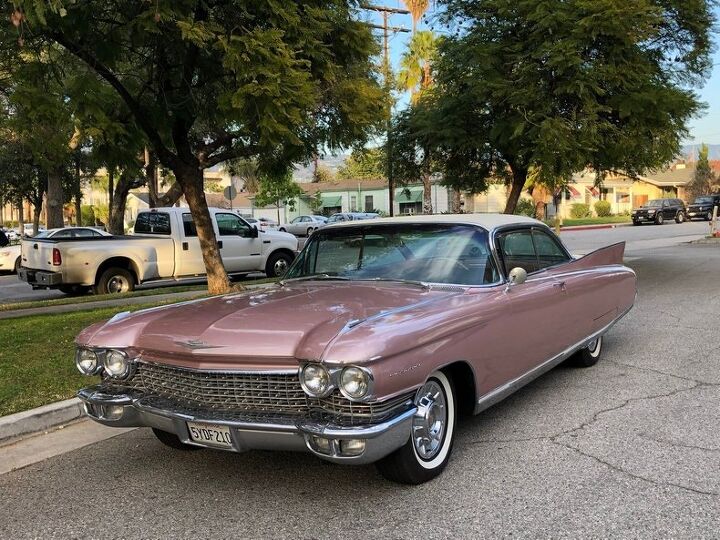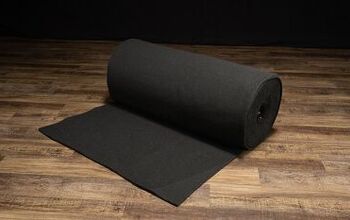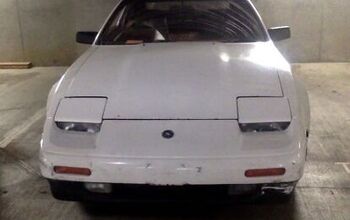Rare Rides: The Grandiose Cadillac Eldorado Seville, From 1960

A light dew suspends itself on finely manicured lawns as you glide past. Lucky Strike in hand, Miles Davis plays on the radio as you adjust the six-way power seat. At the office, the space in front of the door has your name on it.
The year is 1960, the winner of capitalism is you, and your car is the Cadillac Eldorado Seville.
The first Eldorado debuted as a new flagship for Cadillac in 1953. It was exclusive, wore a special body, and was available solely as a two-door convertible. Its official title at the onset was the Series 62 Eldorado, and it was twice as expensive as the 62 upon which it was based. In 1953 it cost $7,750, or about $75,000 adjusted for inflation.
Available for a single year only, the Eldorado set itself up as an American luxury standard; however, because it was so expensive, GM-required volume sales were impossible. Time for a change.
In 1954 the second generation Eldorado arrived, once more available only as convertible. This time, there was no unique body, and it looked very similar to the Series 62. Turned into a luxury trim, Eldorado sales soared. A product split occurred in 1956 when the hardtop Seville appeared, at which point the convertible received the Biarritz moniker. The Seville quickly accounted for a third of Eldorado sales.
Quick to move forward, the third Eldorado was ready for the ’57 model year. Standard Eldorados were still a trim of the Series 62, but Cadillac pulled out the stops for a new Series 70 Eldorado Brougham. Hand-built and with suicide doors, the sedan was $13,074 ($121,000 adjusted), and cost more than offerings like the Rolls-Royce Silver Cloud. The Series 70 is worth its own Rare Rides article at a later date.
In 1959 a new Eldorado appeared yet again. Coupes and convertibles moved to their own body, a version called Series 6400, though they maintained the same wheelbase as the new Series 6200 sedan. The Eldorado Brougham was no longer hand-built; the less extravagant large sedan was on the Series 6900 body and built by Pininfarina in Italy.
The fourth generation Eldorado two-doors saw enormous fins and gigantic hunks of chrome trim applied liberally, as overall length grew to 225 inches. All were powered by a 390 cubic-inch (6.4L) V8 of 345 horsepower, which shifted through a four-speed automatic. Most everything was standard equipment, apart from air conditioning. 1960 was a revisionist year for the Eldorado; styling was smoothed and toned down a little. Pointy surfaces were reduced in number, there was less chrome up top (it migrated down below the doors), and the fins shrunk in size. Standard upholstery for 1960 was a Chadwick cloth, or upscale mixed Chambray cloth and leather.
Though the Eldorado name would continue on in 1961, 1960 was a last-of moment. At the end of the year, the Eldorado Seville and Eldorado Brougham were killed off, the Biarritz convertible being the lone survivor. The Eldorado name continued its decline for the rest of its life, culminating in its demise at the end of 2002.
Today’s pink Eldorado Seville is resplendent in metallic pink. It’s worth noting the interior is not original, lowering its value. It’s currently on eBay and asks $34,800.
[Images: seller]

Interested in lots of cars and their various historical contexts. Started writing articles for TTAC in late 2016, when my first posts were QOTDs. From there I started a few new series like Rare Rides, Buy/Drive/Burn, Abandoned History, and most recently Rare Rides Icons. Operating from a home base in Cincinnati, Ohio, a relative auto journalist dead zone. Many of my articles are prompted by something I'll see on social media that sparks my interest and causes me to research. Finding articles and information from the early days of the internet and beyond that covers the little details lost to time: trim packages, color and wheel choices, interior fabrics. Beyond those, I'm fascinated by automotive industry experiments, both failures and successes. Lately I've taken an interest in AI, and generating "what if" type images for car models long dead. Reincarnating a modern Toyota Paseo, Lincoln Mark IX, or Isuzu Trooper through a text prompt is fun. Fun to post them on Twitter too, and watch people overreact. To that end, the social media I use most is Twitter, @CoreyLewis86. I also contribute pieces for Forbes Wheels and Forbes Home.
More by Corey Lewis
Latest Car Reviews
Read moreLatest Product Reviews
Read moreRecent Comments
- Lorenzo The unspoken killer is that batteries can't be repaired after a fender-bender and the cars are totaled by insurance companies. Very quickly, insurance premiums will be bigger than the the monthly payment, killing all sales. People will be snapping up all the clunkers Tim Healey can find.
- Lorenzo Massachusetts - with the start/finish line at the tip of Cape Cod.
- RHD Welcome to TTAH/K, also known as TTAUC (The truth about used cars). There is a hell of a lot of interesting auto news that does not make it to this website.
- Jkross22 EV makers are hosed. How much bigger is the EV market right now than it already is? Tesla is holding all the cards... existing customer base, no dealers to contend with, largest EV fleet and the only one with a reliable (although more crowded) charging network when you're on the road. They're also the most agile with pricing. I have no idea what BMW, Audi, H/K and Merc are thinking and their sales reflect that. Tesla isn't for me, but I see the appeal. They are the EV for people who really just want a Tesla, which is most EV customers. Rivian and Polestar and Lucid are all in trouble. They'll likely have to be acquired to survive. They probably know it too.
- Lorenzo The Renaissance Center was spearheaded by Henry Ford II to revitalize the Detroit waterfront. The round towers were a huge mistake, with inefficient floorplans. The space is largely unusable, and rental agents were having trouble renting it out.GM didn't know that, or do research, when they bought it. They just wanted to steal thunder from Ford by making it their new headquarters. Since they now own it, GM will need to tear down the "silver silos" as un-rentable, and take a financial bath.Somewhere, the ghost of Alfred P. Sloan is weeping.






































Comments
Join the conversation
If you look closely, you can see styling cues from the '67 Eldorado in the trunk of the latest XTS and if you squint a bit as well, in the CT4/CT5 too. But just a bit. The rest is modern generic sedan trying a bit too hard. .
Baby Likes Back